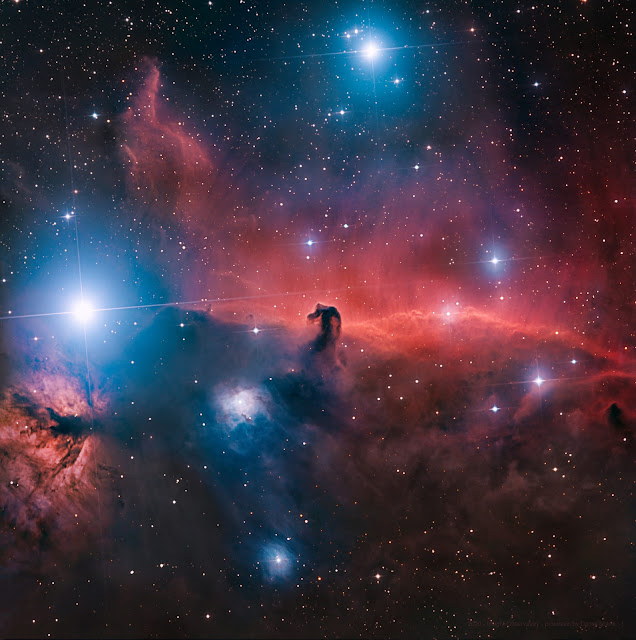I'll soon be doing an extragalactic supernova search, monitoring a small group of 5 or 6 spiral galaxies, similar in structure, to our Milky Way, barred-spiral galaxy - in the Virgo galaxy cluster.
The Virgo Cluster of galaxies is (around) 30-50 million light-years from the "Local Group" - the Milky Way's home, galactic cluster. The Virgo galactic cluster contains a spiral galaxy, M66, in the constellation Leo. It is some 35+ million light-years distant.
Back on 11 February 1989, at around 02:15am EST, Insight Observatory Managing Member and Project Developer, Michael Petrasko, and I, independently co-discovered a supernova (SN1989b), within one of the outer spiral arms of M66 (Michael, was the actual discoverer; I just "looked"!).
Supernova events within any given galaxy are estimated to occur only two or three times in a century. I'll see if I can refine that estimate, somewhat, over the course of a few months of nightly or bi-nightly photographic time-exposures of the group, using one of Insight Observatory's remote astrographs (photographic telescope) - ATEO-1, or ATEO-2A. The instruments are situated in the western New Mexico region, respectively - some of the clearest and darkest skies in the world.
Typically, an SN burst is so energetic that its brilliance, temporarily, outshines the combined light of all of the billions of stars within a given galaxy. Any SN event will stand out as a tiny, bright, dot, superimposed against the overall, dim, oval blur of light of the main body of the galaxy. It is during a supernova burst that the heavy elements of our universe are forged (iron, nickel, and other heavy metals). From there, the energy of the blast disperses the elemental metals into the surrounding space including any nearby molecular clouds which ultimately condense and become planetary systems (such was the case in our "Solar" system).
This is the history of the metallic content of Earth's mantle and crust, and, its solid iron core.
Dale Alan Bryant
Senior Contributing Science Writer
Read More
The Virgo Cluster of galaxies is (around) 30-50 million light-years from the "Local Group" - the Milky Way's home, galactic cluster. The Virgo galactic cluster contains a spiral galaxy, M66, in the constellation Leo. It is some 35+ million light-years distant.
Back on 11 February 1989, at around 02:15am EST, Insight Observatory Managing Member and Project Developer, Michael Petrasko, and I, independently co-discovered a supernova (SN1989b), within one of the outer spiral arms of M66 (Michael, was the actual discoverer; I just "looked"!).
 |
| The Local Group and other galaxy cluster groups. Graphic by Dale Alan Bryant. |
Supernova events within any given galaxy are estimated to occur only two or three times in a century. I'll see if I can refine that estimate, somewhat, over the course of a few months of nightly or bi-nightly photographic time-exposures of the group, using one of Insight Observatory's remote astrographs (photographic telescope) - ATEO-1, or ATEO-2A. The instruments are situated in the western New Mexico region, respectively - some of the clearest and darkest skies in the world.
Typically, an SN burst is so energetic that its brilliance, temporarily, outshines the combined light of all of the billions of stars within a given galaxy. Any SN event will stand out as a tiny, bright, dot, superimposed against the overall, dim, oval blur of light of the main body of the galaxy. It is during a supernova burst that the heavy elements of our universe are forged (iron, nickel, and other heavy metals). From there, the energy of the blast disperses the elemental metals into the surrounding space including any nearby molecular clouds which ultimately condense and become planetary systems (such was the case in our "Solar" system).
This is the history of the metallic content of Earth's mantle and crust, and, its solid iron core.
Dale Alan Bryant
Senior Contributing Science Writer













